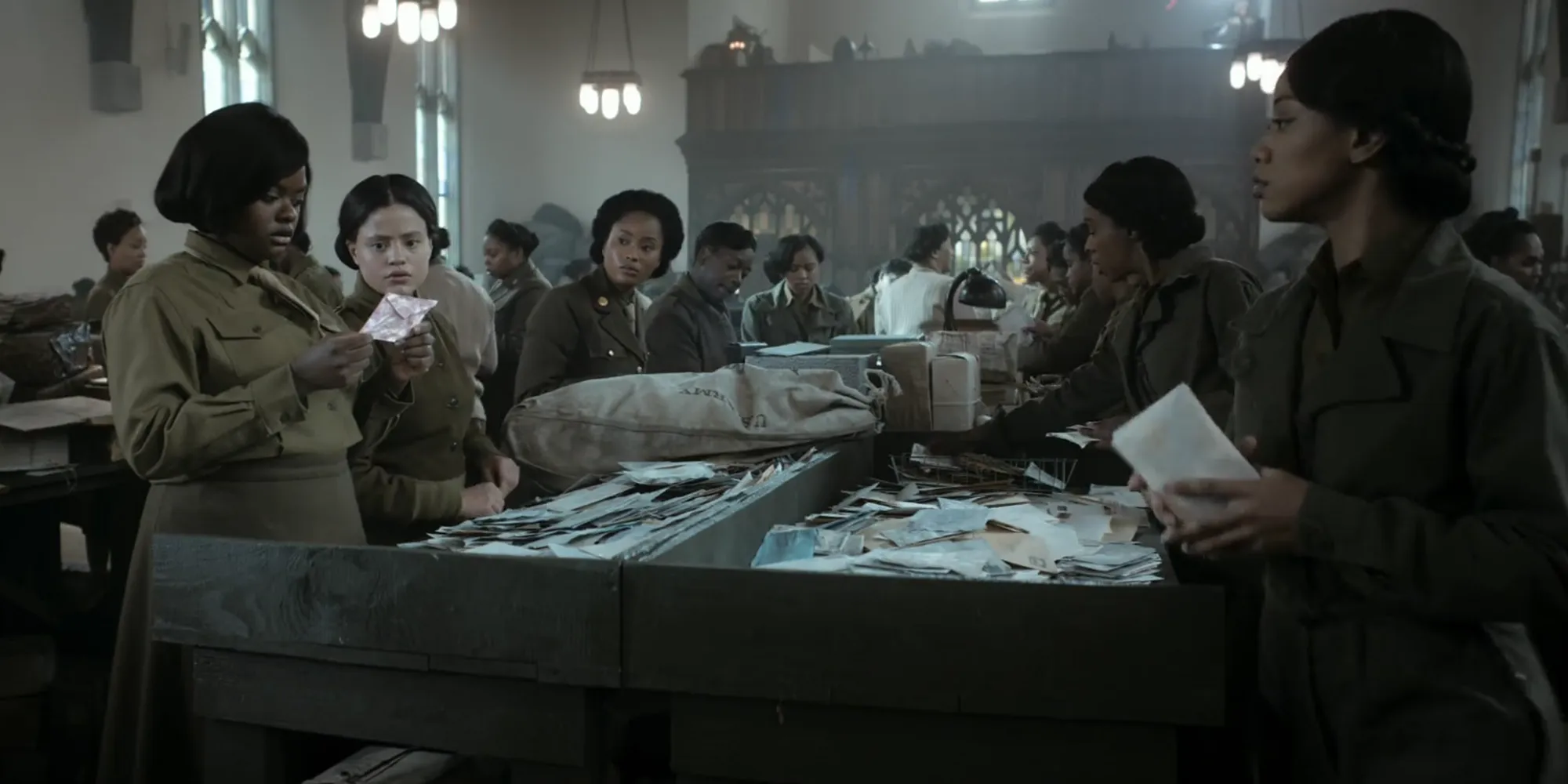
Tyler Perry’s upcoming Netflix release, The Six Triple Eight, unveils the remarkable story of an underrecognized battalion from World War II. This battalion, composed entirely of Black women, undertook the monumental task of sorting through an astonishing 17 million letters meant for American soldiers and their families. As depicted in the film, soldier morale had plummeted during this period, exacerbated by the lack of communication from home. Many soldiers were deprived of care packages and letters, leaving a void that only heightened anxiety for both troops and their loved ones.
The emotional toll of uncertainty was profound. Families and friends were left to wonder about the well-being of soldiers, often receiving tragic news only after devastating events, as illustrated by Lena Derriecott King’s experience in the film. Consequently, the necessity of sorting the backlog of communications became urgent, leading to the pivotal role of the Six Triple Eight battalion in this heartbreaking chapter of history.
Innovative Methods for Locating Letters
Creative Solutions to Identify Sender Addresses

Faced with the daunting task of sorting millions of misplaced letters, the women of the Six Triple Eight employed inventive strategies to restore contact between soldiers and their families. Utilizing locator cards, directories, and soldier information—such as names and service numbers—they established a methodical approach to manage this colossal workload.
However, the challenges extended beyond basic sorting. At times, the soldiers had to open letters and packages to gather hints regarding the intended recipients. Clues like specific fragrances and textiles greatly assisted in narrowing down the origin of the letters. By identifying these characteristics, they could trace back to the stores where these items were sold, significantly aiding their sorting efforts. Nevertheless, the task was far from simple, as the volume and condition of the letters presented continuous obstacles.
Challenges in Sorting the Letters
Facing Racism, Unsafe Conditions, and Damaged Correspondence

The real-life women of the Six Triple Eight confronted numerous trials throughout their mission from the outset. Initially, they had a mere six-month deadline to complete their monumental task—a timeframe that seemed inadequate given the sheer volume of mail. Major Adams, portrayed by Kerry Washington, quickly recognized that her team had been set up for failure by their commanding officers. Throughout their efforts, these brave women encountered both sexism and racism, compounding the difficulty of an already Herculean task.
“They did not send us because they thought we could do it. We are here because they are sure we cannot.”- Major Adams (Kerry Washington), The Six Triple Eight
Many letters were notably damaged, some even infested by rodents, making it challenging to decipher sender and recipient information. Furthermore, the working conditions were far from optimal; many women battled cold temperatures that necessitated wearing gloves, significantly hindering their efficiency. The constant threat of air raids and bombings loomed overhead, adding yet another layer of adversity.
Despite these seemingly insurmountable challenges, the women of the Six Triple Eight rose to the occasion. They managed to efficiently connect soldiers with loved ones, sorting through 17 million letters in just three months—half the allotted time—demonstrating their resilience and capability (source: TIME). Their triumph redefined perceptions about their abilities and established their rightful place in history.
Source: TIME




Leave a Reply